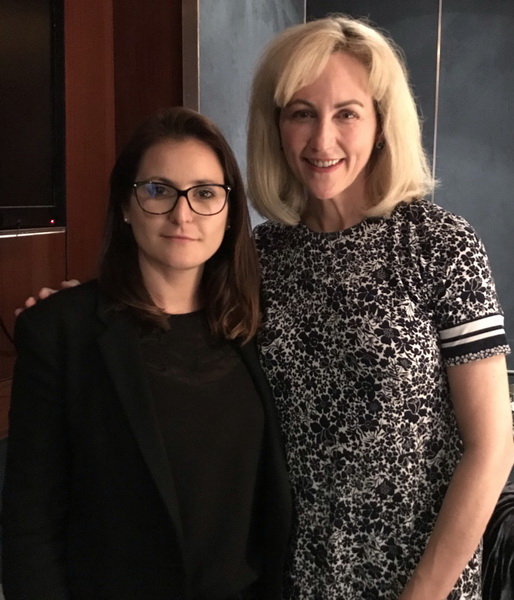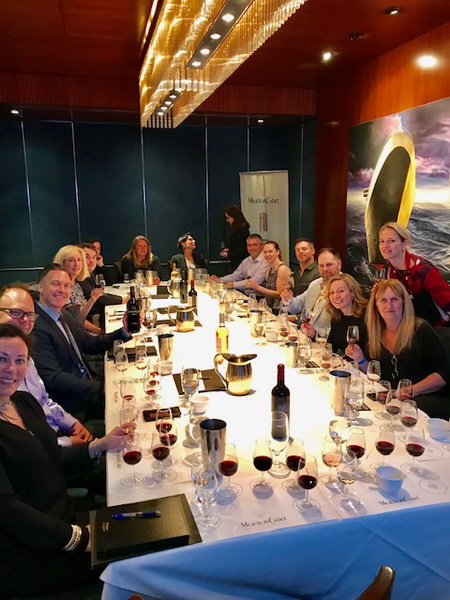
Here are the team’s impressions. Click on bottle shots below to see all of the tasting notes for each wine.

Wine Writer & Sommelier
Mouton Cadet, the branded wines of the Baron Philippe de Rothschild company which also owns Château Mouton Rothschild, are wines almost every sommelier and wine enthusiast have experienced.
They’re a familiar sight as the more accessible representation and alter-ego to the heady and pricey older sibling.
Having a chance to hear Ophelie Loubersac speak about the wines that she and and her team creates was fascinating.
Imagine being the head of a commercial winery bearing the name of history’s most famous wine family; a staple since Bordeaux has had a reputation.
You’re tasked with producing a consistent representation of Bordeaux style in a climate with a high degree of vintage variability, but it also has to be really approachable and not too firm or acidic. This is her job.
This wine leads with Merlot in its Bordeaux blend, with soft natural tannins. The team’s sensitivity to styles and trends is probably most notable with their rosé, which has a lot less time on the skins than it has in the past. Their use of oak is quite minimal too – even on the big appellations, like Pauillac and St Emilion.

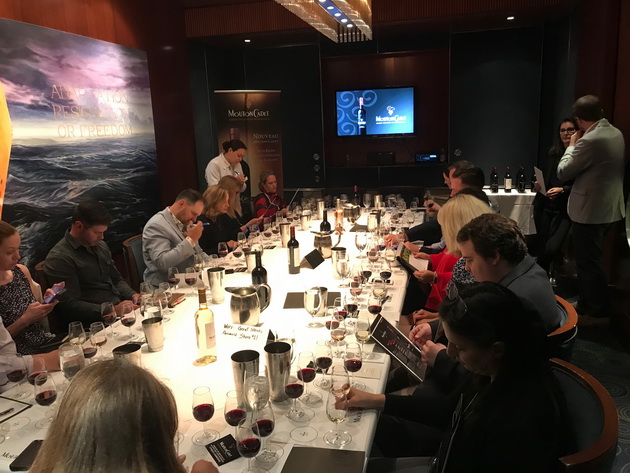
Mouton Cadet began in the 1930s. Hearing her speak about the direction of the brand since it first came to North America in the mid-fifties, you get a sense that winemaking is risky, a lot of work, and sometimes thankless. It sometimes takes a while to accomplish what you intend to do.
Shortly after the winery went under the leadership of Baroness Phillippine, in 1988, they created a separate winemaking facility. Before 1993, grapes were bought from producers and blended.
Once the facility was built in 1993, the next leap in quality began when the decision was made to work with grape growers via contract, instead of sourcing grapes on the open market.
This is more common in the New World. Mouton Cadet managed this slowly, by working progressively more from contracts and less from buying grapes on the market.
This partnership is mutually beneficial for growers and the brand. Mouton Cadet gets greater control over the fruit they need to make a consistent product and the growers get a buyer invested in their success that helps them develop their vineyards.
There are risks. In the last decade, there have been terrible harvests where hail has devastated crops and cost growers an entire season’s worth of fruit.
However, as a bloc of growers, Mouton Cadet and its partners still work together. This could mean winterization or mitigation strategies to reduce crop loss, but it also means moving to have a sustainable vineyard space.
Their newest challenge is the certification of all 300 contract growers to be HEV certified (a French government designation for High Environmental Value). Installing biological swails to reduce pollutants, using water more efficiently, and less spraying are all examples of their most recent evolution.
You get the feel from tasting the wines and learning their history that part of the success of this brand has been their sensitivity to the changes necessary to stay competitive. It was a pleasure to hear how Ophelie reifies innovation and growth in a bottle of wine with Rothschild on the label.



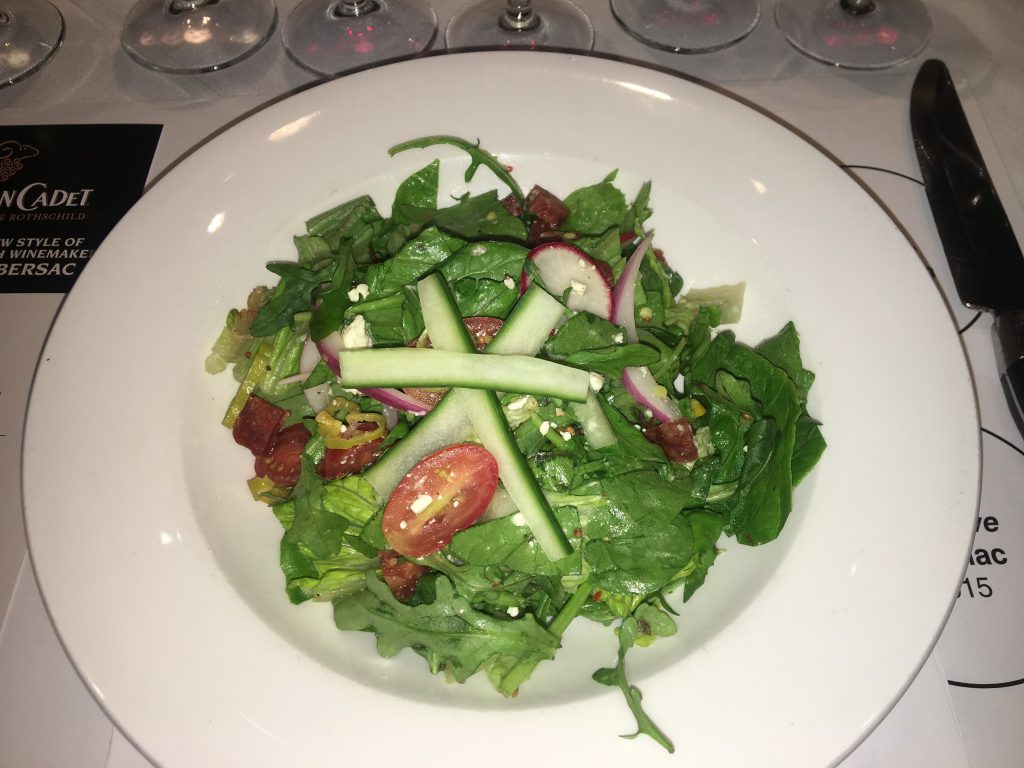
2018 Mouton Cadet Blanc
Chopped salad with red wine and oregano vinaigrette
2016 Mouton Cadet Rouge
New York Steak Sandwich with tomato bruschetta, feta and balsamic


Wine Contributor, Ottawa Citizen
It was such a pleasure to meet and learn about the Mouton Cadet wines from winemaker Ophélie Loubersac. We were hosted at The Shore Club for a lovely structured tasting, followed by lunch.
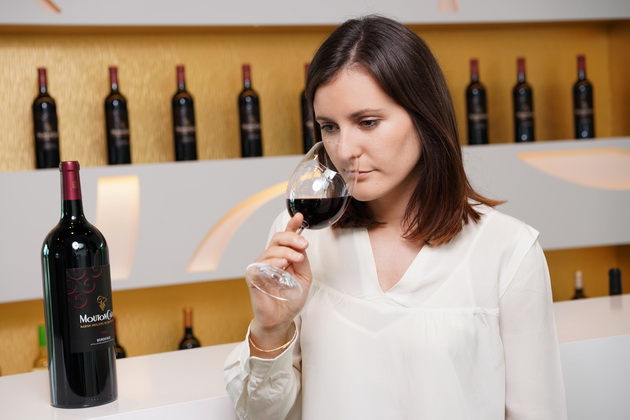
Mouton Cadet is probably familiar to many, having been available in Canada since 1953. It’s the second label of the famous chateau started by Baron Philippe de Rothschild.
The label was developed back in 1930 as a second label to ensure a wider audience for their wines, offering more fruit forward styles and ready to drink wines. The label became incredibly successful and is now the wine supplier of such high profile events like the Cannes Film Festival and the Ryder Cup.
Our tasting involved a recap of the brand and its history, as well as the introduction of some of the re-vamped and re-introduced wines. Some are currently available here in Ontario, and some (unfortunately, as they were lovely!) are not at this time – maybe someday!
Loubersac walked us through the evolution of the brand, and their approach to wines. As it has always remained a family business, there is strong consistency in values and approach, but there are clear advancements made by each successive generation of the family, particularly around quality and sustainability.
Prior to 2003, the brand primarily bought bulk wines and was responsible for the blending of the final product. Then the focus shifted to identifying more specific partners and producers and tightening up the supply chain.
Since 2015, they have again shifted to working only with exclusive growers and have a focus on providing input and guidance on the entire process from the growing of the grapes to the winemaking. This helps ensure a greater focus and control on quality. Their growers also pursue a global certification called the HEV (High Environmental Value) recognizing sustainable practices in the grape growing process.
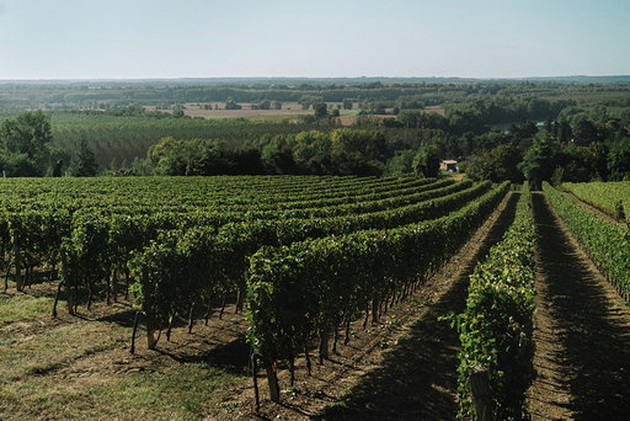
Now with the third generation of the Rothschild family at the helm, there is an increased focus on sustainability as well as the quality initiatives they have adopted.
I was surprised to hear how much water goes into the production of wine, about two bottles for each bottle of wine produced. For a facility producing about 12 million bottles of wine per year, that is an incredible amount of water!
By building their own water treatment plant, they are able to clean and reuse some of the water that would otherwise be disposed of in other areas of the property.
They have also shifted to more neutral cleaning products which are not harmful to the environment and are committed to revising the carbon footprint reduction plan on a regular basis. The future looks to be committed to continued production of quality wines with a focus on good, sustainable practice.
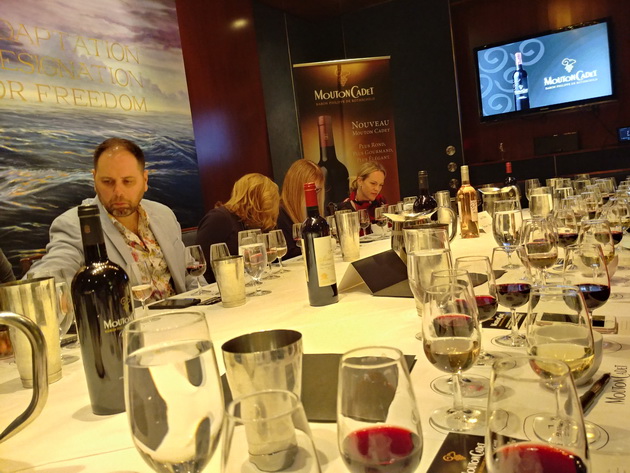




Wine Expert, CTV Morning Live
The opportunity to taste wine with a storied third generation Bordeaux winery, guided by one of their talented and super passionate winemakers, Ophelie Loubersac, was something I was keen to experience and learn from.
For me, and I suspect many of you, the Mouton Cadet (Baron Philippe de Rothschild) portfolio of wines, is something I’m very familiar with having seen their popular Bordeaux wines prominently displayed on the shelves of wine shops across Canada for many years, in fact since 1953.
But despite my familiarity with the brand, I hadn’t had the opportunity to learn about their rich history, dating back to 1930, nor their associations with some truly iconic Grand Crus of Bordeaux.
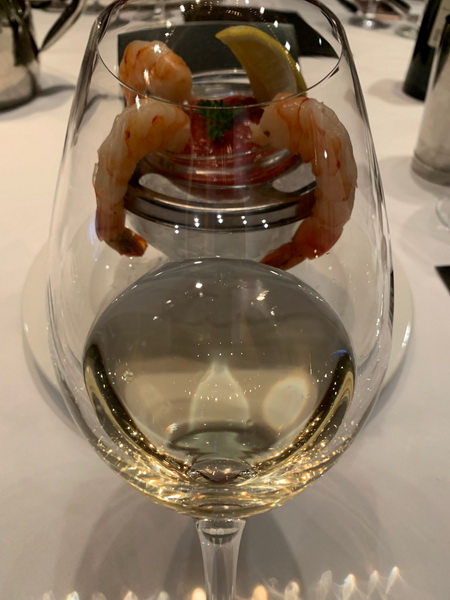
Photo: Paul Gault
Mouton Cadet, the branded wines of the Baron Philippe de Rothschild company which also owns Château Mouton Rothschild, are wines almost every sommelier and wine enthusiast have experienced.
Yes, there is a link to Chateau Mouton Rothschild, one of the world’s most celebrated and coveted Bordeaux Premier Crus…in fact, it was that wine that provided the inspiration for the creation of the Mouton Cadet…(‘mouton cadet’ being the French term for ‘younger sheep’ of the family), and so the ‘ branded wine’ of the Baron Philippe de Rothschild company , which continues to be enjoyed by many around the world today.
Now in the third generation, this fixture in the Bordeaux wine scene, has modernized their operations and embraced a variety of quality and environmental leadership initiatives to ensure consistent quality in their wines while minimizing their impact on the environment now and for subsequent generations that will carry on the traditions that Baron Philippe de Rothschild started when he founded the winery in 1930.
If I had to pick one, my favourite wine of the tasting, it would be the Mouton Cadet Reserve Saint-Emilion 2016. A super expressive Right Bank Bordeaux that showed ripe cherry, red and black fruit, dark plum, cinnamon, vanilla, and espresso. The palate repeated all those flavours with great balance making it a stunning value-priced Saint-Emilion wine to enjoy now and over the next decade.
Insider tip: The Mouton Cadet Reserve Pauillac continues to be made with a bit of Premier Cru (Chateau Mouton Rothschild) wine, and two Fifth Growth wines (Chateau Clerc-Milon and Chateau d’Armailhac)…no wonder it’s such an impressive value-priced Pauillac wine.
Check out a Mouton Cadet wine next time you see one on the shelf.
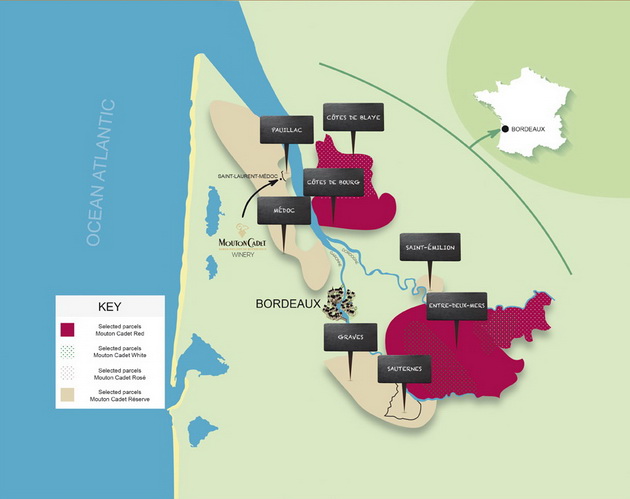

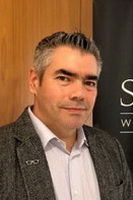
Wine Writer & Sommelier
Winemaker, Ophelie Loubersac, was a dynamic speaker and the stories she shared were fascinating. The fact that the wine has such a long and amazing history was well reflected in her presentation.
It was also interesting to see how many more products they have and the work they put in to reflect the region in their winemaking. I also liked her explanation on how to manage frost and other unfortunate climatic problems. Having many grape growing partners is useful.
Furthermore, it was interesting to see the map showing the location of the grapes used in the blend of the wine and the reason behind choosing certain proportions of each grape to create this amazing wine.
What was most surprising is the logistics involved at the beginning. Having to deal with so many grape growers all around the Bordeaux region was incredible. Being able to keep everything working on a day to day basis was astonishing. Moreover, having 300 growers supporting their winemaking and blending is really an amazing feat.
Also, being able to keep the winery in the family for three generations is quite an achievement. You can feel their passion, like Ophelie Loubersac said, the working environment is amazing and family-driven.

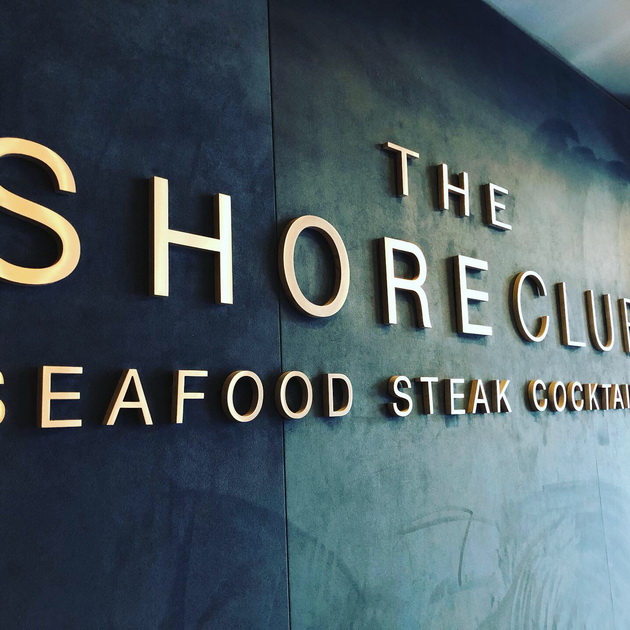
I particularly enjoyed the story of the five brothers, especially the younger brother who started Mouton Cadet, and the meaning of the crown with the five arrows. I also liked the fact that they are present in sporting and artistic events, as well as their effort towards a more eco-friendly winery. Mouton Cadet has always been known as a leader in winemaking in the Bordeaux region.
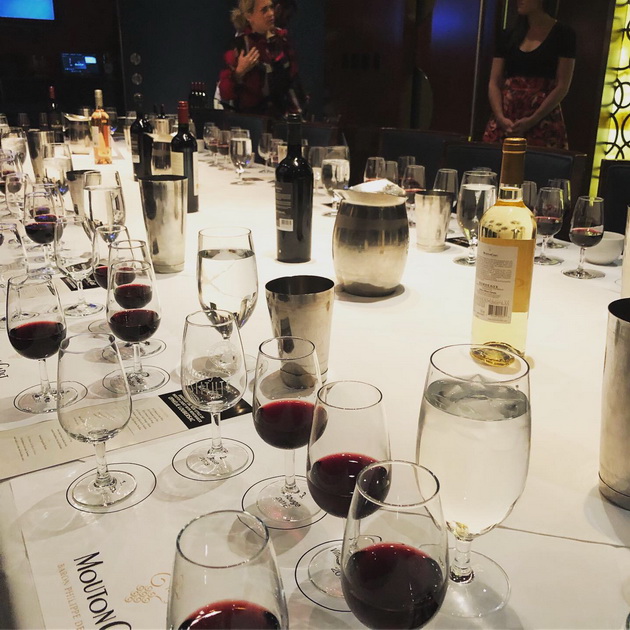





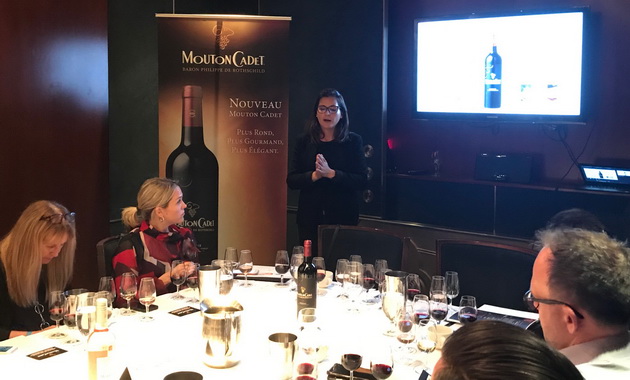


Wine & Travel Writer
Created in 1930 by Baron Philippe de Rothschild, the Mouton Cadet wines exhibit the rich and diverse elegance of the Bordeaux wine terroir region of France. The Atlantic Ocean’s proximity plays an essential, but the sometimes unpredictable, role in growing and cultivating exceptional Merlot and Cabernet Sauvignon grapes.
Interesting tidbit: The 1970 vintage took second place, and was the highest ranked French wine, at the historic 1976 Judgment of Paris wine competition.
Mouton Cadet is considered Bordeaux’s most successful brand. Year after year, and despite the differing wine-growing conditions, Mouton Cadet continues to provide consistent and good quality wines. They are representative of its Bordeaux region, and with their more-than-reasonable prices, remain accessible to a large audience.
Overall, great wine and food pairings, in a lovely atmosphere.




Wine Writer & Competition Judge
Mouton Cadet has long been a household name synonymous with special occasions and memorable gatherings with family and friends.
The luncheon with Mouton Cadet was insightful and informative as we took a trip through the many decades of this successful brand. The guided tasting left me with a heightened appreciation of the longstanding family business as well as a greater understanding of the company’s commitment to quality and the desire to exceed expectations in a constantly evolving wine industry.
Our guided wine tasting was hosted by none other than Ophelie Loubersac, one of Mouton Cadet’s gracious winemakers. Mouton Cadet was founded by the Baron de Philippe Rothschild in 1930, who took great pride in his ability to create fantastic wines for public consumption thus an iconic rand was born.
The company has remained in the family through the generations with the Baroness Philippine de Rothschild at the head for many years, a true visionary who achieved international status for Mouton Cadet wines. She worked tirelessly to carry on the work of Baron Philippe and it was her innovative, futuristic, leadership that constantly pushed the company to the next level, setting the bar for which many other wineries would aspire to achieve.
She invested in cutting edge technology, state of the art equipment and made improvements to care for the environment. The Baroness, in her commitment to the environment, created a state-of-the-art water treatment plant, implemented customized harvesting and vinification, in her desire to achieve consistent results, where possible, year over year.
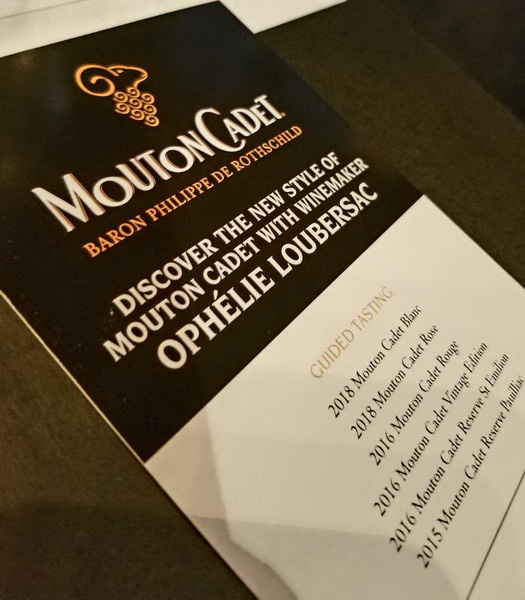
After her death in 2014, her son, Philippe Sereys de Rothschild, became and is now CEO and Chairman. His brother and sister also work alongside him, Camille Sereys de Rothschild, and Julien de Beaumarchais de Rothschild, and are committed to carrying on the vision of their mother to continue to expand and grow their company, building on the success they have honed for almost a century.
Our tasting began with the 2018 Mouton Cadet Blanc, pale yellow with a nose of lemon and grapefruit, the palate was well balanced with a blend of citrus, apricot and great acidity that was lovely with the shrimp cocktail first course.
We moved to the rosé, and this was one of my favorites. A blend of Merlot (68%), Cabernet Sauvignon (12%), Cabernet Franc (2%). Powder pink in the glass, the palate was elegant with noticeable flavors of raspberry, strawberry, a touch of pomegranate and a subtle hint of mint. This would be most enjoyable on its own and I couldn’t help but think how delicious it would be with sushi!
We then moved on to sample some of the flagship reds, starting with Mouton Cadet Rouge, 2016. It was luscious and fruity, comprised of mostly Merlot at 83% and a touch of Cabernet Sauvignon and Cabernet Franc. I tasted blackberry, blueberry, cherry, and some subtle spice. The tannins were noticeable, but not overpowering.
The Mouton Cadet vintage edition wines are notably all carefully chosen for their respective terroir and how that will impart those qualities to the wine. Grapes from each carefully selected parcel are regularly monitored for their uniqueness and contribution to the “personality’ of the wine.
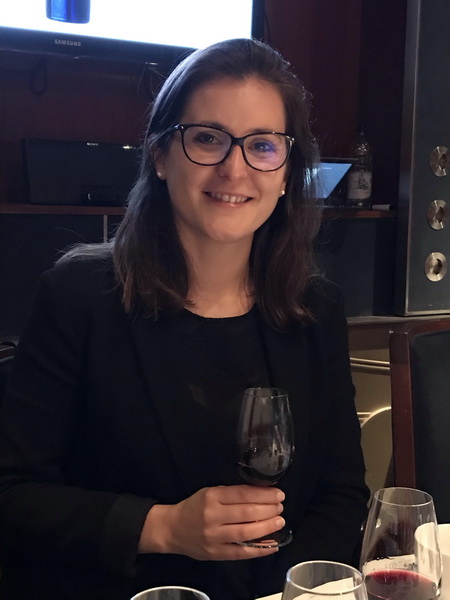
The Mouton Cadet Edition Vintage blends Merlot, Cabernet Sauvignon and Cabernet Franc. The Merlot adds the fruitiness while the Cabernet Sauvignon imparts power and structure, while the Cabernet Franc provides elegance and a subtle silkiness. These wines paired well with my seasonal vegetable risotto.
The 2016 Mouton Cadet Reserve St. Emilion and the 2015 Mouton Cadet Reserve Pauilliac really show the care and craftsmanship that the Mouton Cadet family company has become so well known for. The carefully selected vineyards on diverse terroir, yield wines that vary in not only their varietal composition, but also in their flavor and profile.
Sampling these wines was the part of the luncheon I enjoyed most. It was evident that this company does not waver from their level of commitment initially set out by their founder, Baron Philippe Rothschild, and by those that have followed in his footsteps decades thereafter. I am certain that Mouton Cadet will continue to grow globally setting the standard for which others will follow.


Mouton Cadet Reserve St. Emilion 2016

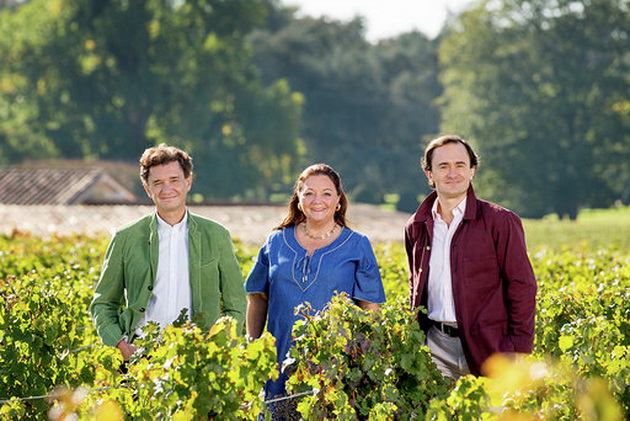

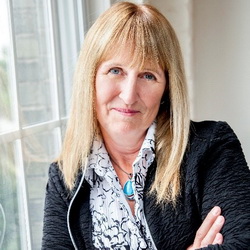
Accredited Sommelier & Wine Writer
Prior to a Mouton Cadet wine tasting with Ophélie Loubersac, I had no idea what HVE (High Environmental Value) Certification was.
It piqued my curiosity so I did some research and reached out to Ms. Loubersac to get some further information on what exactly the Certification was, and what Mouton Cadet was doing to obtain it.
HVE has three levels and was introduced in France in 2011 by the Ministry of Agriculture. The purpose was to encourage farms and vineyards to focus on increasing biodiversity, decreasing their negative environmental impact by reducing the use of pesticides and fungicides, managing their fertilizer inputs and improving water management.
Given that Mouton Cadet has 300 vineyards that they work with this is no small feat as each one must also be certified.

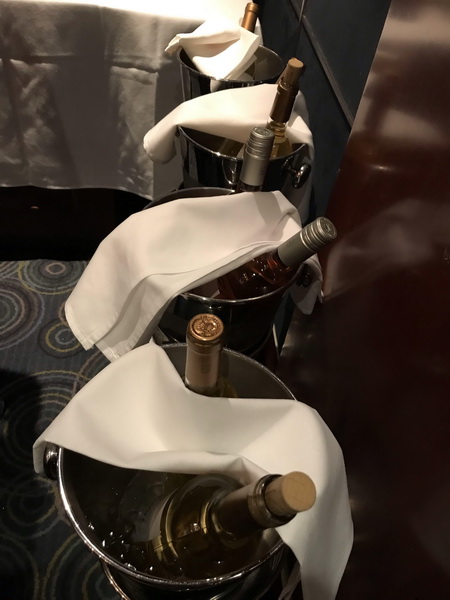
While a winemaker, Ophélie is also in charge of this program to get the partner wineries and the Mouton Cadet winery certified by the end of 2020. Currently, they are all at Level 2.
At the Mouton Cadet winery itself, they have an organic water treatment plant that allows them to recycle the water they use to clean their vats. The winery has also been ISO 1401 certified since 2011.
When it comes to the other wineries they work with them to install such things as bushes and trees to help animals and insects nest, live and develop. They also closely monitor to ensure that pesticides and fungicides are only being used when really needed. Being HVE certified also means that 10% or more of the area of the wineries will be biodiversity areas.
I found it interesting to listen to Ophélie talk about this initiative and was impressed with all the hard work that has gone into the program thus far.
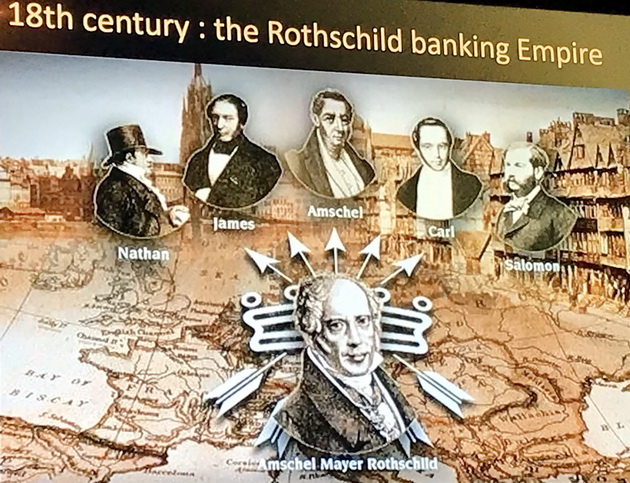
Usually, something of this nature has a champion behind it to keep the momentum going. When I asked Ophélie about this, it was evident that the current family members, as well as the past, are dedicated to preserving their winery. She said “The new generation of the Rothschild family that took over our company in 2014, and more especially our Chairman and CEO Philippe Sereys de Rothschild, has been our driver on working with our partners on getting them certified so that Mouton Cadet can officially be a sustainably produced wine. The family is deeply committed to protecting the environment.
The certification of our winery in 2011 was conducted by Philippine de Rothschild, the second generation of the Rothschild family at the head of the family company at that time.”
It was clear when tasting the wines of Mouton Cadet that this initiative is helping them make better wines, while also helping to sustain our environment. I can’t think of a better pairing – can you?


Mouton Cadet Vintage Edition 2016

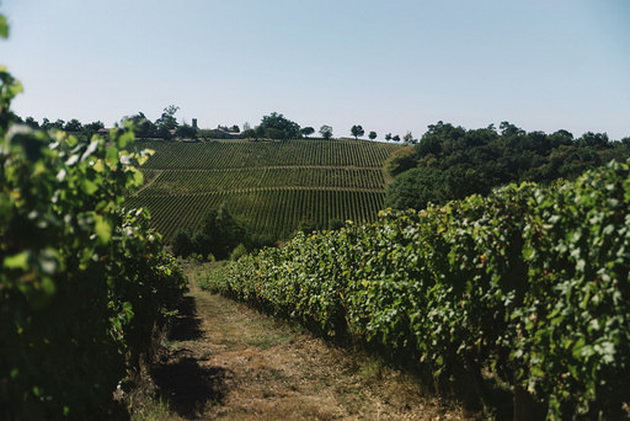

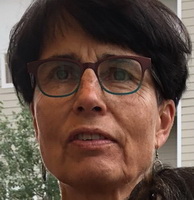
Wine Writer & Sommelier
The theme of our winemaker tasting and luncheon with Ophelie Loubersac of Baron Philippe de Rothschild was, in essence, these “are not your fathers’ Mouton Cadet wines!” This was Mouton Cadet’s first major tour of Ontario; Ottawa was the first stop.
Baron Philippe de Rothschild, owner of Château Mouton Rothschild, launched Mouton Cadet in 1930 as a “second” wine, to make quality wines more accessible. Over the years Mouton Cadet has kept an eye on quality and now obtains grapes exclusively from growers by partnership agreements, which enables Mouton Cadet winemakers to work hand in hand with the winegrowers throughout the whole winemaking process.
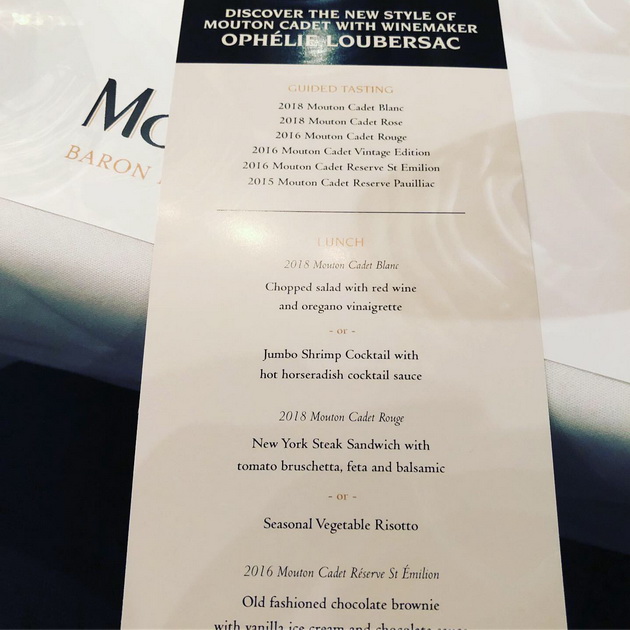
Mouton Cadet is not content to stand still and is constantly striving for improvement. The range presented by Ophelie demonstrates this approach. Mouton Cadet has evolved their style to a rounder, fresher, more fruit driven wine, better suited to changing consumer tastes. They have also introduced a Reserve line targeted at a smaller subset of consumers that showcases different Bordeaux terroirs.
While all wines were well made and extremely drinkable, I particularly enjoyed the Mouton Cadet Blanc; a fresh and fruity Sauvignon Blanc-based white that is full, round and aromatic and the Mouton Cadet Reserve Pauillac that is smooth, full and replete with gorgeous fruit aromas and tastes.
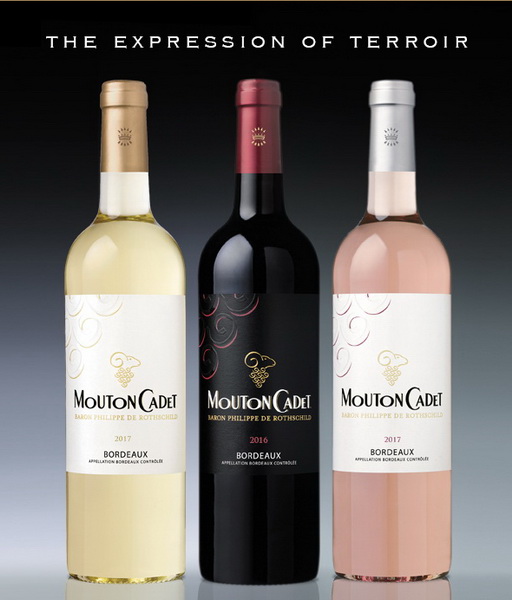


Restaurant Wine Consultant
Ophelie Loubersac of Baron Philippe de Rothschild, on her tour of Canada, hosted a wine maker’s luncheon at the Shore Club in the heart of downtown Ottawa.
She presented six wines from the Mouton Cadet family, with a brief history of the Baron Philippe de Rothschild family as she progressed through each wine.
The Rothschild family comes from the banking business starting in the 1700s. All five Rothschild sons, Nathan, James Amschel, Carl and Salomon worked in the baking business. Their father sent them to five capital cities across Europe, London, Paris, Frankfurt, Naples and Vienna to build the family banking dynasty.
Baron Nathaniel de Rothschild, who lived in England, wanted a family wine to present to guests, so he moved to Paris and bought a chateau in the Pauillac area of the prestigious Bordeaux wine region of France.
If you take a close look at the Mouton Cadet bottle logo, you will notice the crown with five arrows. The five arrows represent each of the 5 Rothschild sons.
Baron Philippe de Rothschild is the great-grandson of Nathaniel. Baron Philippe launched Mouton Cadet in 1930. This more accessible, affordable wine was created as a blend, which at the time was considered the leading edge of wine innovation.
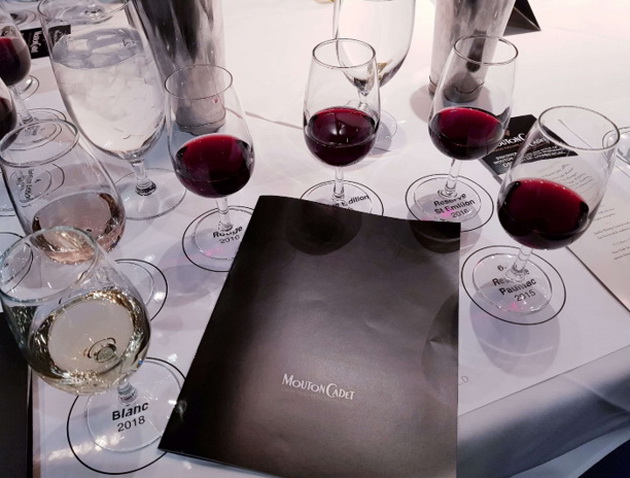
Mouton Cadet gained AOC classification in 1947 and export of Mouton Cadet began in the 1950s to the UK and the US.
It was in the 1970s that Mouton Cadet introduced white wines into its line.
In 1988, after the death of Philippe de Rothschild, his daughter Baroness Philippine de Rothschild took over the business. She was instrumental in promoting Mouton Cadet internationally, which became the “first bottled brand in the world.”
Sponsorships include two high-profile events as the official supplier of the Cannes film festival and the Ryder Cup, the biennial men’s golf competition.
After the death of the Baroness de Rothschild in 2014, the family dynasty was passed on to the third generation to continue the legacy.
Part of Mouton Cadet’s success is a result of their decision to partner exclusively with vine growers throughout the Bordeaux region.
Conscious of the environment, Mouton Cadet follows a global certification for High Environmental Value, HVE. Part of the HVE movement includes saving and reusing water. On average, it takes 2 litres of water to create just 1 litre of wine. By reusing water for cleaning or watering the lawns of the winery, they are able to save a significant amount of water. An environmental analysis is done once every 10 years.
Today, the top five export markets for Mouton Cadet are Canada, China, France, the United States and Germany.
Continuous effort is being made in building better partnerships with Mouton Cadet’s vine growers. They now play a key part in community events and festivals.
The tasting menu of the day consisted of a choice of a chopped salad with red wine and oregano vinaigrette or Jumbo Shrimp Cocktail with hot horseradish cocktail sauce to start.
I chose the salad. It was paired with the 2018 Mouton Cadet Blanc. The zestiness and herbaceous notes of the vinaigrette paired perfectly with the bright acidity and herbaceous notes of the white wine.
The main course offered two options, the New York Steak Sandwich with tomato bruschetta, feta and balsamic or the Seasonal Vegetable Risotto.
My choice was the Seasonal Vegetable Risotto, paired with the 2018 Mouton Cadet Red. This blend is comprised of 83% Merlot, 10% Cabernet Sauvignon and 7% Cabernet Franc. The Merlot giving the wine its fruit notes, with the Cabernet Sauvignon and Cabernet Franc lending the structure and balance. The richness of the risotto paired very well with the slightly grippy tannins of the wine.
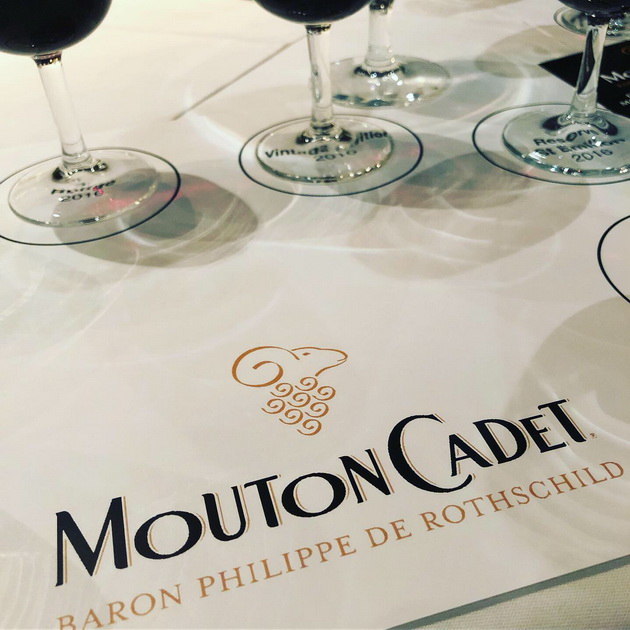
The third and final course was a sumptuous old fashioned chocolate brownie with vanilla ice cream and chocolate sauce. The wine chosen to pair with this dessert was the 2016 Mouton Cadet Reserve St. Emilion.
Although some may say chocolate could be tricky to pair with wine, this particular pairing was perfect. The wine is a classic blend with round structure and integrated tannins with flavours of dark fruit preserves and sweet spices; a perfect asymmetry with the texture and sweetness of the brownie.
Here’s a fun fact for you to ponder. In 1979, Baron Philippe de Rothschild partnered with Robert Mondavi of California to create the highly regarded Opus One wine. This was the first Franco-Californian wine created in rue Bordeaux style.


2015 Mouton Cadet Reserve Pauillac

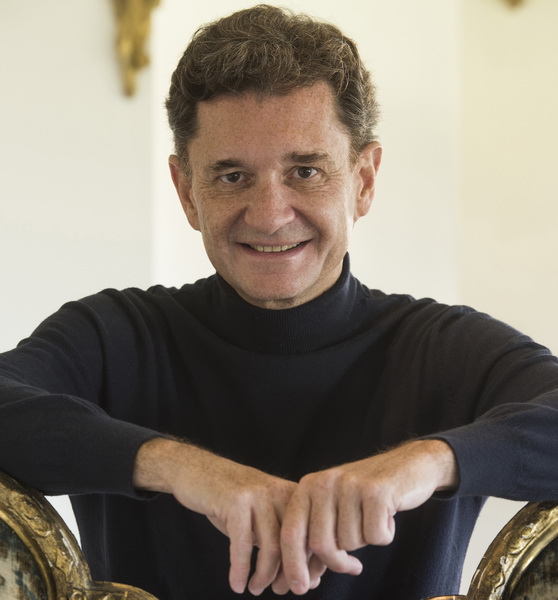

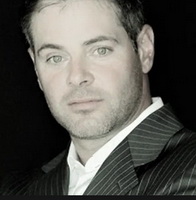
Wine Consultant & Writer
I was pleased to attend the recent tasting of Mouton Cadet Wines with a luncheon- style gathering at Ottawa’s downtown Shore Club restaurant. It was top drawer on every level. Ophelie Loubersac of Baron Philippe de Rothschild was a wealth of knowledge, and the face-to-face opportunity was a terrific way to gain insight into Mouton Cadet, the world’s number one selling French wine brand.
She an absolute authority on their product, at the same time very approachable and available for questions of which we had a few. We tasted six wines, great conversation and a lovely lunch complete with wine pairing.
I was surprised to see how young Ophelie was. I never ask a woman’s age, but she is incredibly accomplished with a very bright future ahead. She officially studied the art of making wine in the south of France and has since traveled the globe honing her trade at top wineries before she settled into Mouton Cadet.
In a business world where everything dear to family values seems to sell out to the biggest bidder, I was pleased to discover that since inception in the late 1700s, Barron Phillippe de Rothschild remains a family-owned company.
They have a US joint venture in Napa Valley with Robert Mondavi, and when Constellation bought Mondavi out, 50% remained owned by Rothschild. Mouton Cadet currently sells quality Bordeaux wines world wine and isn’t connected with Lafite Rothschild, the Grand Cru Chateau, also from Bordeaux.
The company has come to own a sales and marketing division in Pauillac, a production facility and 40-acre vineyard in Medoc, a distribution company in Paris and Japan, other wineries in Languedoc, Chile and Champagne and Opus One in the States.
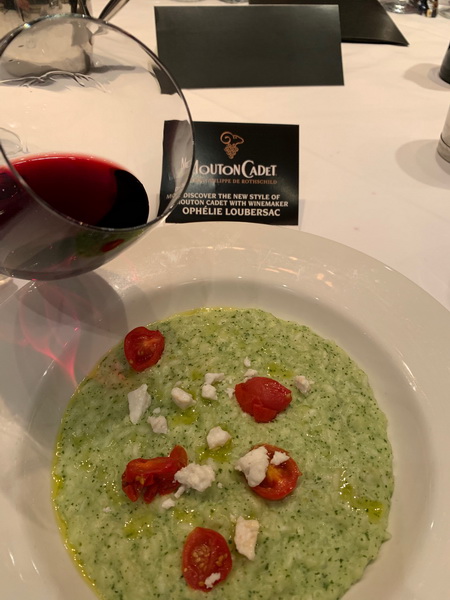
Photo: Paul Gault
Ophelie went on to explain that in the late 17th Century, Amstel Rothschild, a French banking tycoon, had 5 sons who were sent to major French cities to learn the business. One of the sons, Nathan purchased Chateau Mouton Brane in Pauillac mostly so he could serve good wine to his guests.
Nathan changed the name to Chateau Mouton Rothschild and passed it down through the generations until Baron Phillipe Rothschild grabbed the reigns when he was just 20 years old in 1922. An innovative businessman, he decided to control quality by insisting that the wines made by the Chateau must be bottled at the Chateau. (Hence the common French labeling term “Mis en Bouteille”.)
Phillipe was also the “cadet” or “youngest son in the family” and started the Mouton Cadet line in 1930 as a means to generate income from non-aged, second growth grapes. It was an instant success and went global by 1950. Phillipe died in 1988. In his absence, the Baroness invested in quality, and their daughter is now CEO. They currently buy grapes from 300 different growers/ partners who practice sustainability and focus on the concept of “human terroir”
Mouton Cadet recently rebranded to mirror their attention to quality and parcel selection, offering new packaging and stylish labeling. They have a three-tiered offering and have broadened their range to include a white blend, a single varietal Sauvignon Blanc, a rosé and of course their classic red blend.
Their mid-tiered wines have more age and see 10 months of oak before bottling, while the Reserve wines mature for 12 months, much of that in oak.
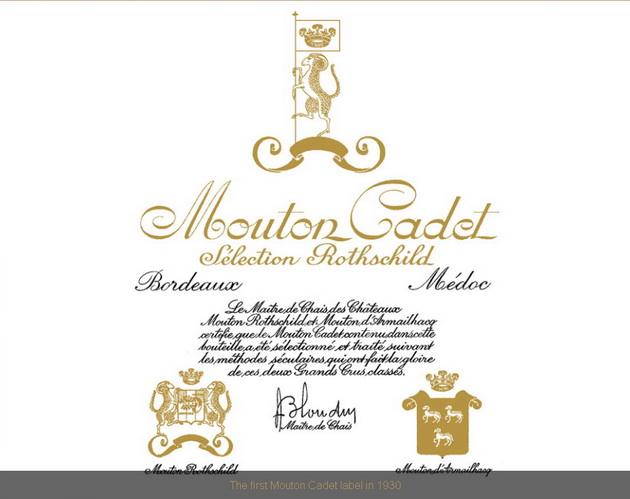


Wine Writer & Sommelier
One of the perks of being a sommelier is having the opportunity to not only taste wines, but also to have an audience with actual winemakers to discuss their practices, their challenges and their vision. Last week I had such an occasion for a personal “small group” meet-and-greet with a passionate French winemaker from Bordeaux, France.
We discussed her winery’s reputation for consistency, their commitment to ensuring quality, and their dedication to innovating and implementing eco-friendly processes to respect their local terroir while minimizing their carbon footprint (which they evaluate every 10 years).
So, which environmentally conscious independent winery was Ophélie (our winemaker) to showcase? It was none other than Mouton Cadet. Yes – THAT Mouton Cadet – the one that has been selling Bordeaux blends across the globe for 90 years (and in Canada since 1953).
Our event was held at Ottawa’s Shore Club restaurant where we were able to taste and evaluate 6 wine selections paired with scrumptiously prepared food.
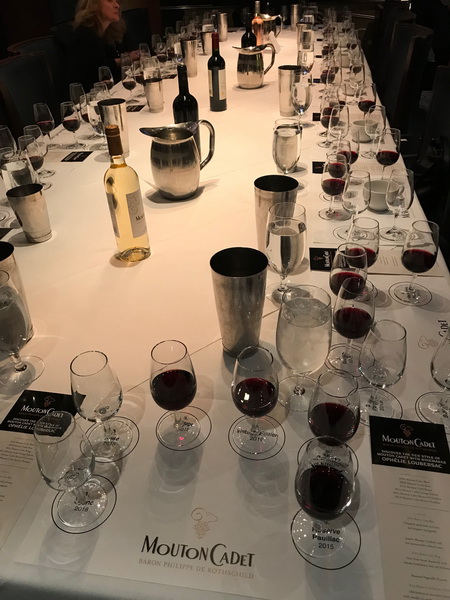
Our first wine was the 2018 Mouton Cadet Blanc – a white Bordeaux. Comprised of a primary blend of Sauvignon ban and Semillon the fruity, grassy and mineral notes all balanced well and along with its crisp nature paired beautifully the freshness of with my shrimp cocktail.
The second course was an unctuous and elegant vegetable risotto paired with the 2018 Mouton Cadet Rouge. This smooth red blend is predominantly Merlot, providing pleasant red fruit flavours with a 17% mix of both Cabernet Sauvignon and Cabernet Franc, that allow for a little spice and earth to work perfectly against the vegetal backdrop of the risotto.
Our final pairing was the 2016 Mouton Cadet St-Emilion Reserve alongside a deep, sweet and delicious chocolate brownie. With 16 months aging in oak, the elegance of the dark fruit of this Merlot-dominant blend offers brightness as well as subtle spice and mocha tones which balances against both the richness and sweetness of the brownie, allowing for a long smooth finish of red fruit, dark fruit, mocha and cinnamon.
The philosophical ambition of Baron Philippe de Rothschild to bring the richness and prestige of Bordeaux wines to the everyday consumer remains very alive today, however not at the expense of either quality or environmental responsibility. All their grapes are all now sourced from 300 carefully selected key partners who all must meet stringent quality and eco standards.
With respect to the environment, Mouton Cadet has invested heavily in protecting water sources, minimizing water usage and it committed to obtaining HEV certification, (France’s highest level of environmental farming certification), for not only their own winery but for each of their 300 partner suppliers as well; suppliers -further cementing their devotion to the planet and high calibre wines for the everyday consumer.
Today Mouton Cadets shows the world that environmental consciousness not only applies to small wineries, nor does it have to come at the cost of producing a quality wine. I’m willing to bet the Baron himself would be proud of that.
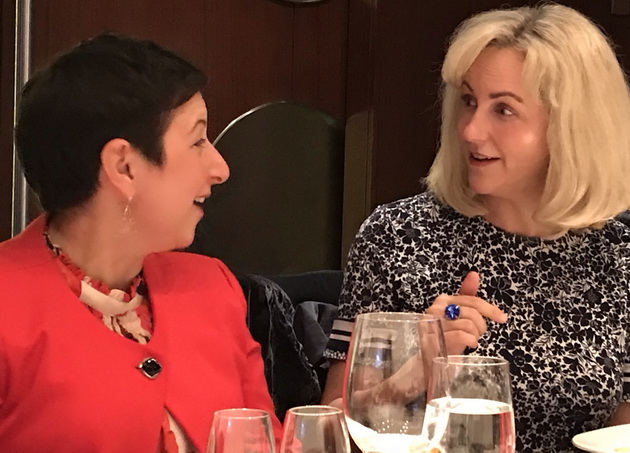


Sally Parsons
Wine Writer & Chef
I joined other industry professionals for a private wine tasting for a presentation by Ophelie Loubersac of Mouton Cadet from Bordeaux. We gathered at The Shore Club in The Westin Hotel in Ottawa.
Many thanks to all who organized this event, the service was excellent, the food delicious and I was happy to find a few new wines and learn about the company.
The history of Mouton Cadet dates back to the 1930s when Baron Philippe de Rothschild decided to launch the Mouton Cadet brand, making Bordeaux wines more accessible to the wider public. The roots of success were planted and the company is still family owned and managed by the third generation of Rothschilds.
What left the greatest impression on me was that early on, the company recognized the strength in agility and partnerships. This has allowed them to successfully respond to customer and market demands as well as forging hundreds of relationships with growers in Bordeaux and partners around the world.
Recognizing that to maintain one’s place in the market of French wines and to become one of the world’s largest exporters (12 million bottles a year) they would be required to focus on the quality and consistency of their house blends and brand.
Baron Philippe de Rothschild began the company’s international expansion into the British market in the 1950s which was followed by entrance into the Canadian market in 1953 and the United States in the 1960s. His daughter, Baroness Philippine de Rothschild succeeded him in 1988 and propelled the company forward with great strides. With the strength of the brand based on great wines, she created a distribution subsidiary company and within ten years she had tripled sales.

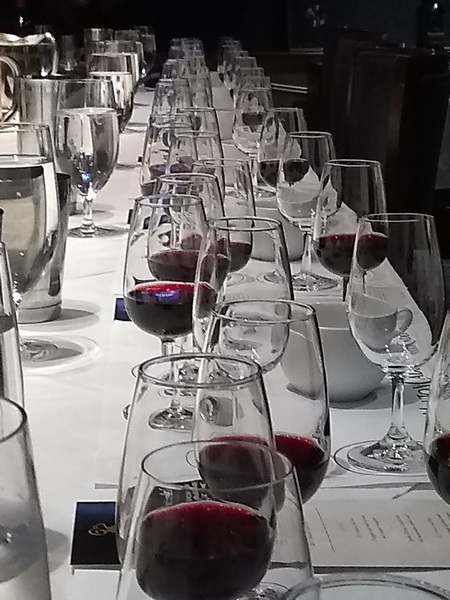
She then forged relationships within Asia, including Japan and China. Recognizing good decisions in the cellar start with good decisions in the vineyard, she inaugurated the Mouton Cadet Winery at Saint-Laurent-Medoc in 1993. Through the cooperation of Mouton Cadet’s technical staff and their partner winegrowers, who tend the vines, the third generation is looking at extending the brand even further.
The offering of wines from Mouton Cadet has grown and so has its sustainability. The company has a focus on terroir and parcel selection with their winegrowers and have not only modernized their production, branding and packaging but have also introduced a Rosé and Sauvignon Blanc to join the always popular Bordeaux Mouton Cadet Red and White wines.
Their Vintage line is a renewal of “old style Bordeaux” including their original label design on the bottle. They have also introduced a line of Réserve wines which are fine examples of the top appellations in Bordeaux including Graves, Médoc, Saint-Émilion and Sauternes with a terroir-driven approach and selective harvesting.
They have implemented their own water filtration plant using reed gardens to help clean some of the gray water they produce. Every ten years they re-assess their carbon footprint and are currently aiming for their HEV certification from France’s Ministry of Agriculture by 2020. This certification recognizes biodiversity conservation, plant protection strategy, managed fertilizer use and water resource management.
This is a company that does not sit around waiting for you to find them, they make a variety of products tailored to those of us who enjoy different calibres of wine and they manage that task in a co-operative, progressive and creative manner.
Whether you’re looking for an easy wine to please many or for something a little more personal, they are worth a try. But, after all is said and done, which of six wines we tasted were my favourites? The 2018 Bordeaux Rosé and the 2015 Paulliac Réserve.

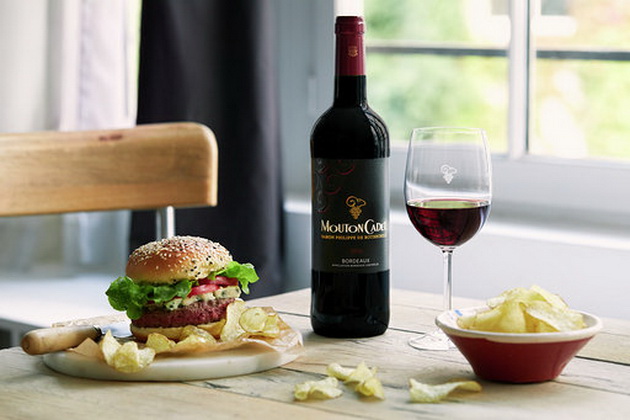

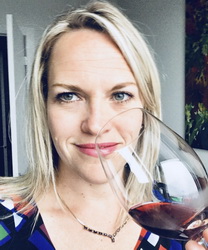
Restaurant Consultant & Wine Writer
Let us not forget the wine geniuses of Bordeaux! The iconic Baron Phillippe de Rothschild (b. 1788), and its charming younger sibling, Mouton Cadet! Mouton was created for the sole purpose of affordability, accessibility, and to be an everyday, quality vin-de-table.
The crimson legend continues to reign as one of the most classically recognized French reds in the world, primarily due to it gaining international attention in 1960 when it entered the UK and US markets. Its nectar soon became the first Bordeaux branded wine sold globally.
It was at one time, in its infancy, arguably synonymous with “Prestigious French Red” to international consumers. This fame is largely due to a would-be-considered-lady-boss-today, Baroness Phillippe de Rothschild, who took over her father’s wine business in 1988. She insisted it become the official “house wine” at the 1991 Cannes Film Festival. Ét vòila! History was in the making.
Fast forward to the here and now. Mouton Cadet’s young, innovative and insightful winemaker, Ophélie Loubersac, originally from the Cognac region of France shares the history of Baron Phillippe de Rothschild, and how Mouton Cadet came to be.
On a sunny Tuesday afternoon, downtown Ottawa’s steakhouse, The Shore Club, an intimate group of eager, nostalgic writers and sommeliers gathered around a boardroom table to sip, savour and swirl around history in-a-glass. With its velvety décor, the space is reminiscent of a texture one might expect from a smooth, well-crafted and aged Saint Émilion. Of course, I ordered the steak sandwich for lunch to pair with a Baron Phillippe Saint Émilion and Pauillac! Ahhh….perfection.
Newsflash: the French really do know what they’re doing when it comes to their wines! Bordeaux is particularly conscious of what its land is capable of.
With it’s meticulous, strategic blending to gain the utmost advantage from grape-to-grape, no matter what hot or cold mess nature throws their way, its ability to adjust its course mid-vintage takes skill. And patience. Which by the way, according to Ophélie, the grape growers hold a surprisingly humbling attitude towards their disadvantage of the constant mercy of mother nature’s dictation, vintage to vintage.
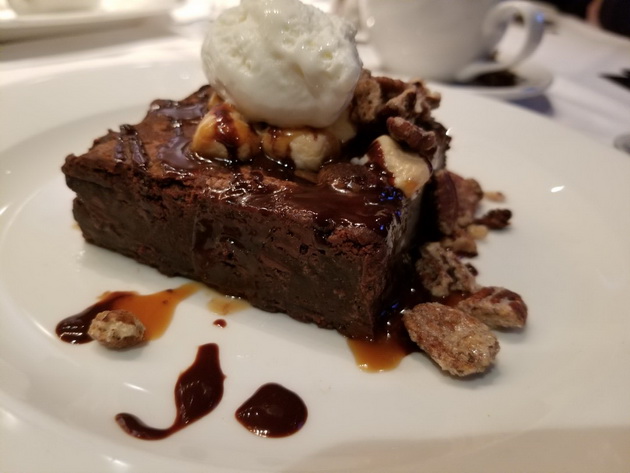
Old fashioned chocolate brownie with vanilla ice cream and chocolate sauce
Photo: Rachelle O’Connor
Imagine having 90% of your crop wiped out in one year due to hail – and then again the following year on your back up crop! True story and it’s devastating. The “c’est la vie” farmer’s attitude is what keeps their talented grape growers and winemakers striving for la crème de la crème, no matter the challenge. Perhaps we could all take a page out of their book?
What stood out in the wonderful Mouton Cadet wine seminar?
The hands-on work with local grape growers. It is indeed impressive working with roughly 300 growers, on average, each year. Mouton’s master viniculture team (think like the Masterchef of winemaking) works diligently with their viticulturists to build long term, sustainable practices and partnerships.
What are they digging for? The generations and generations of past winemaker’s trials and tribulations with its soils and microclimates. What they discovered was ancient, intuitive agricultural knowledge gained from artful precision and technique when it comes to grape growing and winemaking practices. They have always respected the land deeply and its surrounding environment.
Since 2017, a new sustainable measure called the High Environmental Value has become a globally recognized certification (HVE) for French winemakers. According to Ophélie, it is now leading the way in critical, French viticultural decision making, supporting as many organic practices where possible.
Can you taste their environmentally conscious efforts in the wine? Absolutely. From the clean, minerally-rich, round and mouth-watering-citrusy-whites, to the berry versatile, playful-yet-refined dry rosés – the tèrroir speaks for itself.
And please don’t forget about the plush, elegant, youthful, more-than approachable A.O.C Bordeaux! Or the required-patience it takes to finally drink the serious, big region reds like Pauillac and Saint Emilion.
You can smell and taste their classically red berry, plummy, licorice-root tea-and-tobacco leaf notes – with their trademark cigar-box riding the heels of your palate. The use of subtle French oak where needed is not shy, yet is anything but in-your-face. Beautiful coffee and hazelnut notes, a hint of cinnamon or vanilla – mixed in here and there. (Instead of everywhere!)
Say what you will—Bordeaux’s still got it, baby! They know their Merlot. They show both Cabernet Sauvignon and Francs who is boss when it comes to blending, showcasing the best characteristics of each varietal. Mouton Cadet knows grapes. They deeply know their soils. They intimately know their sources. They understand that patience is needed – and vinous masterpieces cannot be achieved alone.
It is a communal effort. In the same way the French share their food and drink with one another, they share a passion for winemaking unlike any other country in the world!
